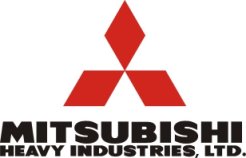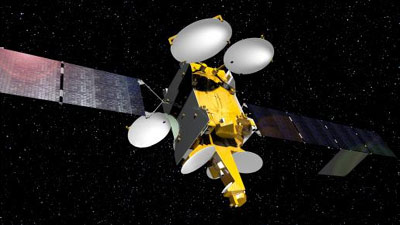Despite being one of the biggest space powers in the world, Japan has never stepped into one of the largest markets in the industry.
Until today, no Japanese rocket has ever lifted a commercial payload as its main passenger. That's right, 0 commercial launch contracts until very recently. :blink:
One can say that the weird result (considering that Toyota and Honda cars and Sony electronics are everywhere) is mainly caused by the fact that their small scale production of rockets and satellites simply makes everything more expensive, in contrasts to the US and Europe as a whole. As a result, Japan didn't even carry any satellite launched on commercial contracts until 2012!
Thus the Japanese worked hard to make the one small step that many other countries have already stepped out many decades earlier (Europe in 1979, China in 1990 etc.), trying to make their satellites and rockets cheaper.
Finally 2 years ago, they got their first ever comsat launch contract from aboard, thanks to problems with other similar rockets in the world back then (think Proton

). Telesat, Canada's most established satellite communications company, stepped in and placed a launch contract for their newest satellite, Telstar 12 Vantage.
2 years later, it is now ready to fly.
As mentioned by Pipcard, the H-IIA rocket to fly today requires some changes to the 2nd stage to make it the equivalent of the versatile Centaur, including additional thermal protection layers, long time re-start modifications for the engine etc., making the Japanese the 2nd nation to fly liquid hydrogen powered upper stages that have several hours or longer endurance. Also the spacecraft separation interfaces was re-designed for softer separation forces
and effort was made to eliminate ground radars for tracking (similar to what ULA recently did to the Atlas V).
Good luck!

Launch window:|06:23:00-08:07:00 UTC, November 24, 2015 / 1:23 - 3:07 a.m. EST/ 15:23:00-17:07:00 JST, November 24, 2015
Launch site:|Pad 1, Yoshinobu Launch Complex, Tanegashima Space Center, Japan
{colsp=2}
[highlight]L[eventtimer]2015-11-24 06:23:00;%c%%ddd%/%hh%:%mm%:%ss%[/eventtimer][/highlight]
Payload: Telstar 12 Vantage communication satellite
Mission Summary
Astrium has been awarded a contract in August 2013 by global satellite operator Telesat to build the Telstar 12 Vantage (Telstar 12V), the latest addition to Telesat’s fleet of communications satellites. This satellite will use Astrium’s highly-reliable Eurostar E3000 platform.
Telesat’s new, multi-mission satellite will replace and significantly expand on Telstar 12 at 15 degrees West. Scheduled to be launched at the end of 2015, Telesat’s newest satellite will have powerful coverage of the Americas and EMEA regions as well as maritime zones in Europe, the Caribbean and South Atlantic.
Telesat’s newest satellite will have a launch mass of under five tonnes with 11 kW of electrical power. It has been designed to have a nominal service life of more than 15 years in orbit.
{colsp=2}Summary
Parameter
|
Value
Working Orbit:
|
GEO
Orbital Location:
|
15° West
Coverage:
|
North/Central/South America, Europe, Middle East, Africa
ApA at separation:
|
35586 km
PeA at separation:
|
3131 km
Inc at separation:
|
19.2°
Characteristics|
Telstar 12 Vantage
Customer:
|
Prime contractor:
|
Platform:
|
Mass at Separation:
|
Dry Mass:
|
Stabilization:
|
Dimensions (stowed):
|
Batteries:
|
- Two solar array wings each with five panels of gallium arsenide solar cells, providing 11 kW at end of life
Payload:
|
Life time:
|
Coverage:
|
|
Launch Vehicle:
The 29th flight of the H-IIA Launch Vehicle (H-IIA F29) is an "H2A204" type with four solid rocket boosters (SRB-As) attached. The 4S (4 m in diameter) type fairing is used.
Live coverage of the launch:
- (starts at 05:45 UTC / 12:45 am EST)
Weather Forecast for Tanegashima Airport, Japan on November 24, 2015 (3 p.m.)
Partly cloudy. High near 20C. Winds NE at 15 to 30 km/h.
Time|Temps|Dew Point|Relative Humidity|Precip|Snow|Cloud cover|Pressure|Wind|Weather
3 PM|19°C|16°C|81%|0%|0%|48%|1015 hPa|16 km/h NE|
Partly Cloudy
Launch Sequence:
{colsp=2}
Event
|
Time [hh:mm:ss]
|
Altitude [km]
|
Inertial speed [km/s]
1.
|Liftoff|
0:00
|
0
|
0.4
2.
|Solid rocket booster burnout*|
1:56
|
68
|
2.3
3.
|Solid rocket booster pair 1 jettison**|
2:07
|
79
|
2.3
4.
|Solid rocket booster pair 2 jettison**|
2:10
|
83
|
2.3
5.
|Payload fairing jettison|
3:25
|
150
|
2.9
6.
|1st stage engine (main engine) cutoff (MECO)|
6:40
|
242
|
6.1
7.
|1st and 2nd stages separation|
6:48
|
245
|
6.1
8.
|2nd stage ignition #1 (SEIG-1)|
6:54
|
247
|
6.1
9.
|2nd stage engine cutoff #1 (SECO-1)|
11:07
|
262
|
7.7
10.
|2nd stage ignition #2 (SEIG-2)|
22:46
|
189
|
7.8
11.
|2nd stage engine cutoff #2 (SECO-2)|
26:37
|
197
|
10.2
12.
|2nd stage ignition #3 (SEIG-3)|
4:22:45
|
33720
|
1.3
13.
|2nd stage engine cutoff #3 (SECO-3)|
4:23:31
|
33754
|
2.1
14.
|Telstar 12 Vantage separation|
4:26:56
|
33902
|
2.1
*) Moment of combustion pressure reaching 2% of maximum
**) Thrust strut cutoff

The current view on Tanegashima Space Center (webcam). *
* This picture is automatically updated at intervals.
You need to reload the page to see the latest image.












